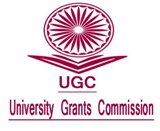Constraints in the Adoption of Cage Aquaculture Practices in Ernakulam District, Kerala
DOI:
https://doi.org/10.26725/JEE.2018.4.30.6165-6172Keywords:
Cage Aquaculture, Constraints, Seabass, KeralaAbstract
The Kerala University of Fisheries and Ocean Studies (KUFOS) implements a project entitled, “Village Adoption for Empowerment and Capacity Building Ensuring Livelihood of Fisherfolk in Central Kerala” from 2015 onwards with the objective of increasing fish production, creating employment opportunities to the fisher folk, thus ensuring livelihood security to them. The University is giving special emphasis on promoting cage aquaculture of variety of species in suitable areas and providing both technical and financial support to its beneficiary farmers for establishing small scale units. The present study was carried out in Ernakulam District of the Kerala State with the objective of identifying the constraints faced by 80 beneficiary farmers engaged in cage aquaculture of Asian seabass. The constraints faced by the cage aquaculture farmers were classified into three categories namely technical, economic and infrastructural/ administrative constraints. The most important constraints were non -availability of quality seeds, high cost of feed and lack of timely and adequate supply of seeds.References
Haque & Ray,G.L (1983). Fish Farmers Perception of the Problems in Composite Fish Culture and Measurers Suggested by them for Increasing the Yield of Fish. Indian Journal of Extension Education. 14 (3 &4) : 56-61
Joseph I.,Ignatious, B.,Joseph,S., & Venugopalan ,K.M. (2015).Asian seabass Lates calcarifer (Bloch, 1790) as the most prospective candidate species for cage culture in Brackish water systems.Proceedings of the 5th International Symposium on Cage Aquaculture in Asia CAA5 :207-214.
Kappen,D.C & Thomson, K.T.( 2009). Constraints in Adoption of Recommended Technologies for Improved Freshwater Fish Farming. Journal of Extension Education 21(2) :4223-4229
Patel, A.N & Trivedi, J.C. (1985).Constraints in Adoption of Poultry Farming in Valsad District of Gujarat State. Maharashtra Journal of Extension Education, 4:145-146
Roy.S.D,Krishnan,P.,Sarma,K.,George.G., Anirudhan A.,Angel J.R..,Murugesan,S & Varghese B.(2015). Cage Culture of Groupers in Protected Bays & creeks of Andaman, Proceedings of the 5th International Symposium on Cage Aquaculture in Asia CAA5 :184-190
Singh,S., Makhija, V.K., Malik, J.S. & Dahia, S. (2002). Sunflower Production Technology- A constraint Analysis. Indian Journal of Social Research.43(3):195-200
Vipinkumar,V.P, & Asokan,P.K. (2008).Mussel Farming Technology Dissemination to the Self Help Groups. Indian Journal of Extension Education 44, (1&2):112-115
Downloads
Published
How to Cite
Issue
Section
License
Authors who publish with JEE agree to the following terms:
- Authors retain copyright and grant JEE right of first publication with the work simultaneously licensed under a Creative Commons Attribution License that allows others to share the work with an acknowledgement of the work's authorship and initial publication in this journal.
- Authors are able to enter into separate, additional contractual arrangements for the non-exclusive distribution of the journal's published version of the work (e.g., post it to an institutional repository or publish it in a book), with an acknowledgement of its initial publication in this journal.
- Authors are permitted and encouraged to post their work online (e.g., in institutional repositories or on their website) prior to and during the submission process, as it can lead to productive exchanges, as well as earlier and greater citation of published work (See The Effect of Open Access).
Extension Education Society
https://creativecommons.org/licenses/by-nc-sa/4.0/
This work is licensed under a Creative Commons Attribution-NonCommercial-ShareAlike 4.0 International License.













.png)

